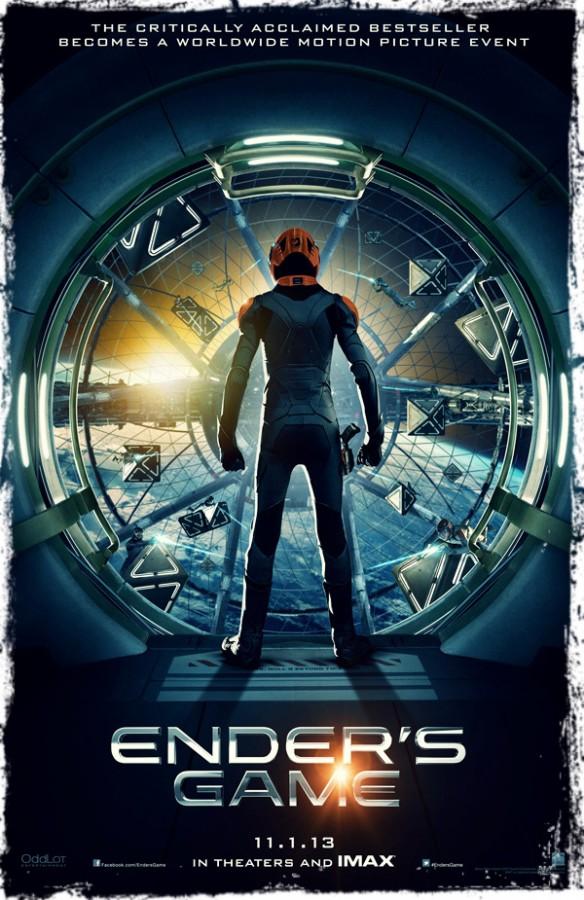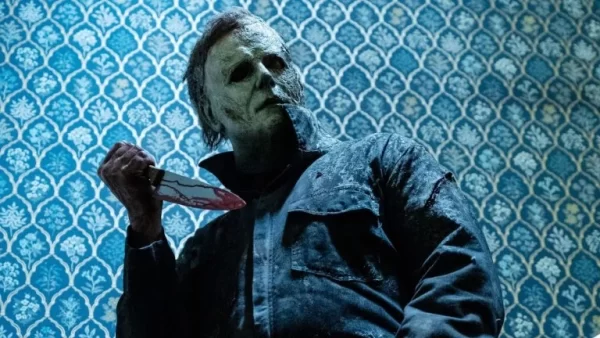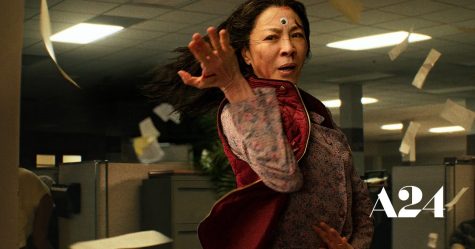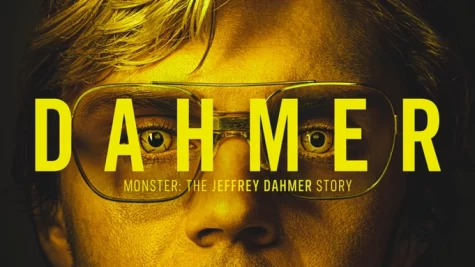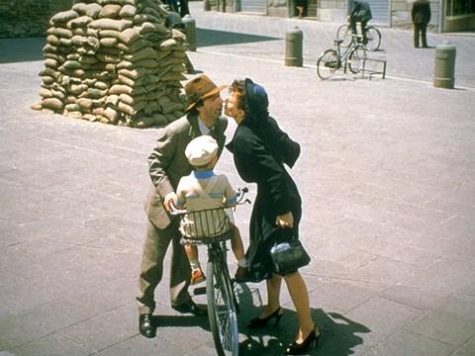Ender’s Game: Press play or game over?
The recently released Sci-Fi film Ender’s Game, from director Gavin Hood, looks beautiful, but is lacking in its character development and display of emotions. Characters put on a militaristic front for their roles, but have difficulties displaying any sort of emotion besides anger or frustration.
Ender’s Game has a star studded cast including Asa Butterfield, Harrison Ford and Ben Kingsley. The last time Kingsley and Butterfield acted together, in Martin Scorsese’s Hugo, they were electrifying and played so naturally off of one another. However, there seems to be a disconnect between characters and their feelings toward one another which are explained in great depth within the 1985 novel of the same name by Orson Scott Card. The main plot is derived from the novel, but adapting a book into a film is a difficult process, which usually results in cutting large chunks of story and intellectual descriptions.
The plot of Ender’s Game presents two battles, one between the humans and Formics, and the second being between militaristic duty and deep individual emotions. The story is of an incredibly intelligent young boy named Andrew “Ender” Wiggin (Asa Butterfield) who becomes part of the International Fleet. The I.F., as it is often called, is a military force that trains young children to command fleets of fighter ships in space against an alien species known as the Formics. Years ago, the Formics attacked Earth and defeated when a soldier of the I.F. named Mazer Rackham (Ben Kingsley) destroyed their mother ship.
Ender is in the top of his class and is chosen by Colonel Graff (Harrison Ford) to be trained in Battle School. He travels to the space station where children are put into small armies which are lead by other children. The armies compete in a zero-gravity arena in order to learn how to give and take orders. Ender is incredibly gifted and is quickly promoted to Command School where he is trained by Mazer Rackham himself in how to combat the buggers. The ending takes on an interesting twist which may be surprising to those who haven’t read the book.
The visual aspect of the film is fantastic. Complicated holograms and simulations come to life and battle ship dog fights are intense and compelling. The futuristic setting is completely believable which becomes the film’s strongest point. Where the film begins to break down, is with its character development.
The novel delves deep into many inner thoughts of characters. It focuses on how they view themselves, how they justify their actions and how they think about presenting themselves. One example of this in the film is how Colonel Graff appears to simply care about stopping the Formics and preserving Earth, regardless of what the training program does to Ender. In the novel, it is clear that Graff truly cares for Ender and does not want any harm to come to him. He does care about preserving humanity, but also feels bad for the psychological damage that is being done to Ender. Similarly Ender appears cold and distant in the film, yet he is constantly assessing his actions and thoughts in the book. After battling with Bonzo Madrid (Moises Arias) and the Formics, Ender feels awful about his decisions and actions. Hood does explain Ender’s thought process with a quote in the start of the film which states that when he defeats his opponents, he both knows and loves that person as they know and love themselves. It’s the small details that are left out which really hurt the characters in the film.
As with most Hollywood films adapted from novels, some of the story is left out or altered. These alterations were obviously made to fit the entire story within 114 minutes. One difference is that events are often rushed through or left out. In the novel, when he is given Dragon Army to command for himself, he spends a great deal of time building rapport with his soldiers and creating battle plans. Dragon Army does so well that the administration begins bending their rules to stack the odds against Ender. This is where Ender begins to bend the rules back and why Ender becomes sick of the I.F. testing him. In the film, it simply rushes through. Hood does try to provide an explanation for Ender’s rapid advancement through the system by showing a countdown to when the next predicted attack will take place. Some things need to be left in though, for example Ender’s character development through his home life. Ender has an older sister named Valentine who is compassionate and caring, as well as a brother named Peter who is cruel and mentally twisted. The two siblings juxtaposed with one another help develop Ender as a sort of middle ground of being able to commit cruelty yet having compassion. On the topic of Ender’s siblings, in the book Valentine and Peter form alternate identities and write political articles that helps raise questioning of Earth’s government. This could have been added in the film to help lead to a sequel.
In terms of sequels, Hood does end on an open note that could lead to future films in the Ender’s Game series. It may be difficult to pull off because the next book starts off with Ender in his mid 30’s traveling from planet to planet, 3,000 years after the end of the war. Asa Butterfield would not be able to return as Ender, unless Hood decided to wait for some years or to alter the story.
Overall, the film was entertaining and appealing to all audiences. The casting was great despite the story’s lack of development. However fans of the novel may find that the film was fast paced and the character development lacking. With potential sequels, the best thing to do would be to hire a new writing staff that can stick to the important elements of the novel’s deep intellectual presentation.
Stephen Fancy can be contacted at: [email protected]

